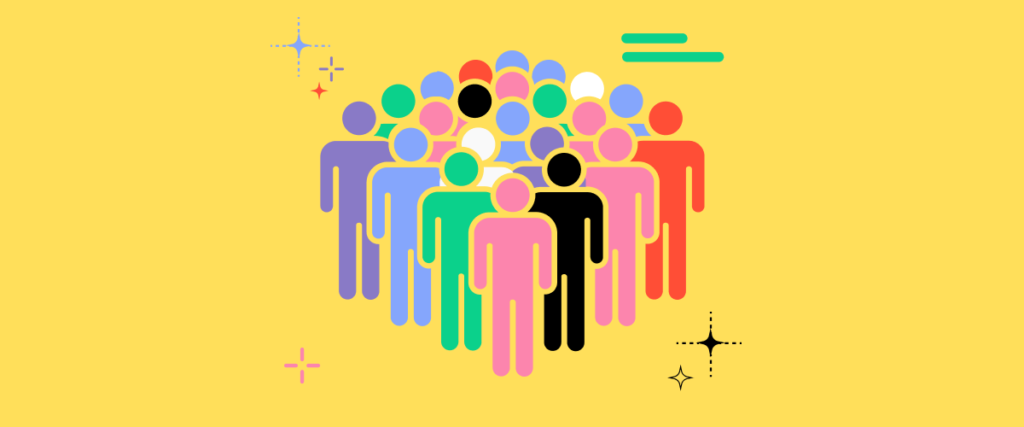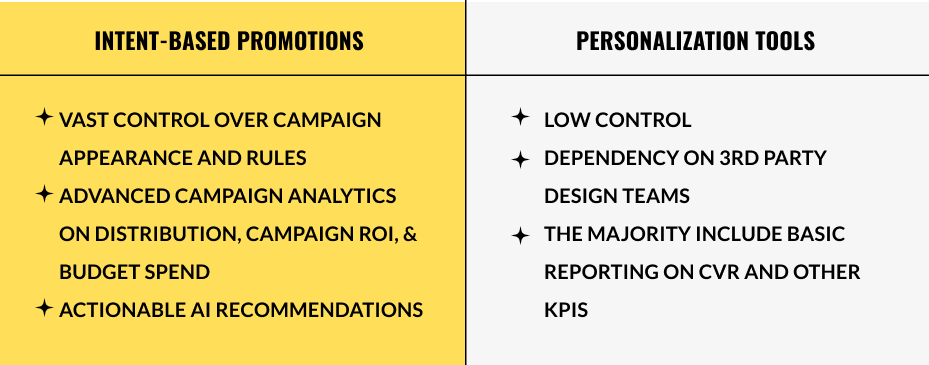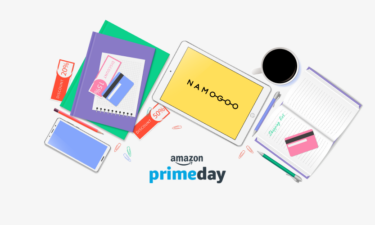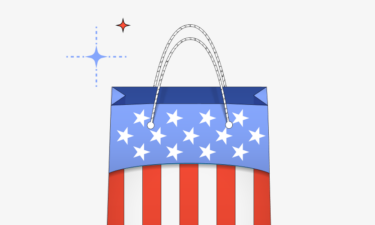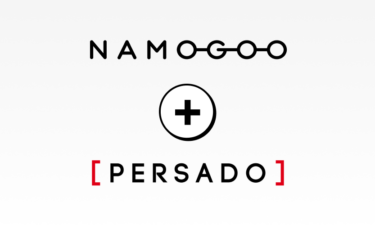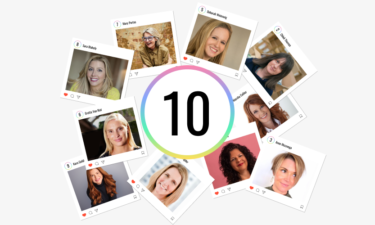Bonus Material: 3 Proven Customer Intent Campaigns for The Best BFCM Yet
From talking with many eCommerce leaders on their promotional strategies, I suddenly noticed that the same point is being raised over and over again: “We run promotions and they’re personalized, beautifully designed, and have a clear CTA. We are expecting them to generate more sales, however it’s not working. Now we find ourselves just staring at the numbers wondering what to do next. Should we run another campaign? Should we give a bigger discount? But that will nibble our margins even more.”
What if I told you that we have the exact solution you’ll need to solve this?
We all know that our customers are at the heart of every business. But it’s pretty clear that the eCommerce world has raised the bar when it comes to individualizing customers’ experiences.
The personalization sector is crowded with millions of eCommerce products, methods, and tips you can find online. However, did you ever wonder, after investing so much time and effort into personalization, why many brands still struggle to gather relevant data to deliver value-added experiences?
Where is your brand in the process of personalizing the customer experience? Have you evolved your definition of personalization from manual segmentation and A/B testing to strategic individualization?
I’ll break down the challenges, starting with defining what personalization tools are and the issues that brands may face when using them. We’ll then shift into our Intent-Based Promotions solution, which refines personalized experiences to form a long-term winning promotional strategy. Finally, we’ll analyze the key factors an eCommerce business MUST consider in order to eliminate the business’s pain points while keeping the customer experience in mind.
But, before we dive deep into comparing the two solutions and how Intent-Based Promotions can compliment your personalization initiatives, let’s start from the beginning.
What’s Personalization & How Did Covid-19 Affect Promotional Strategies & The Urge To Personalize The Digital Experience?
Admittedly, Covid-19 has affected customers’ purchasing decisions, pushing brands to adjust and tweak their go-to-market plans and, more precisely, their promotional strategy.
If you’re a marketer or eCommerce manager, you’ve probably tried some of the personalization tools out there or at least considered using one. And you’re not alone; in fact, a Google Report revealed that 90% of marketers use personalization tools as part of their strategy.
Online personalization tools enable brands to deliver experiences with a personalized feeling that aims to replace the relationship customers used to get in physical stores. It’s a way for brands to tailor recommendations, emails, content, offers, and experiences, using segmentation or machine learning algorithms, across all channels and devices instead of one-size-fits-all journeys.
But do personalization tools genuinely benefit both the business and the customer in the long term? Or are they only meant to fulfill short-term conversion rate uplift prayers? Most brands still have a long way to go until they reach this next level of individualized personalization as part of their promotional strategy.
So What’s The Deal With Current Personalization Tools & Solutions?
There is clearly a lot of hype around personalization in the eCommerce ecosystem, but is it justified? Personalization tools help businesses provide shoppers with a sense of attachment. However, do eCommerce brands know what it really means to have an online personalization experience today? Do they actually understand how it works?
For most businesses that aren’t necessarily “techy” at their core, implementing new technologies such as new personalization tools is an expensive process that takes time and effort from the company. In many cases, eCommerce brands don’t fully understand what they should expect from personalization vendors, their limitations and restrictions, and how to overcome them.
Shifting From Manual Segmentation & A/B Testing To Individualized Promotions
On the surface, personalization tools and Intent-Based Promotions might appear to be similar. There are commonalities, but there are three core foundations that set Intent-Based Promotions apart from other personalization tools in the market.
Due to Namogoo’s Digital Journey Continuity platform, businesses enjoy real-time, in-session analyses to remove all interferences, disruptions, and hesitations in the customer journey. All of this is done autonomously and effortlessly with fast implementation and short time-to-value for the brand, without the need for professional services, constant maintenance, and figuring out what to try next.
Depending on your brand, there are different KPIs you’ll need to consider. Whether you currently use a personalization tool or are considering adopting a new one, let’s discuss the differences between Intent-Based Promotions and other personalization tools in terms of the five key aspects you should be looking at.
1. Choose A Good Business Partner That Won’t Give Your Profitability & Margins Away

Personalization tools are meant to boost conversion as that’s the primary way to prove value. And of course, if you give a higher discount or a valuable gift, you’re likely to convert more.
Since that’s typically the case, personalization tools tend to be biassed and prone to delivering a higher discount rate to all customers. In the short term, like any promotion, it will boost sales and performance. In the long term, this unfortunately leads to a significant compromise of revenue and unnecessary allocation of discounts to those who don’t need them. Not only that, neglecting different KPIs such as margins, promotional costs, CAC, and more can cause a gap between various stakeholders in the company with diverse interests.
Intent-Based Promotions brings all stakeholders to the table by tackling the full scope of business goals from lowering journey abandonment by considering each visitor’s intent together with business KPIs and brand equity.
We deliver the minimum and most effective promotion, or no promotion at all, without giving away your margins by automatically diversifying promotion offerings for each individual shopper.
2. Switch From A/B Testing & Segmentation To In-Session Intent Prediction

Most personalization tools rely only on rule-based or segmentation strategies to fight cart abandonment. Although it’s possible to create specific segments with just one visitor in it, it’s still assigned to a specific segment and pre-made cluster, which tends to be less flexible.
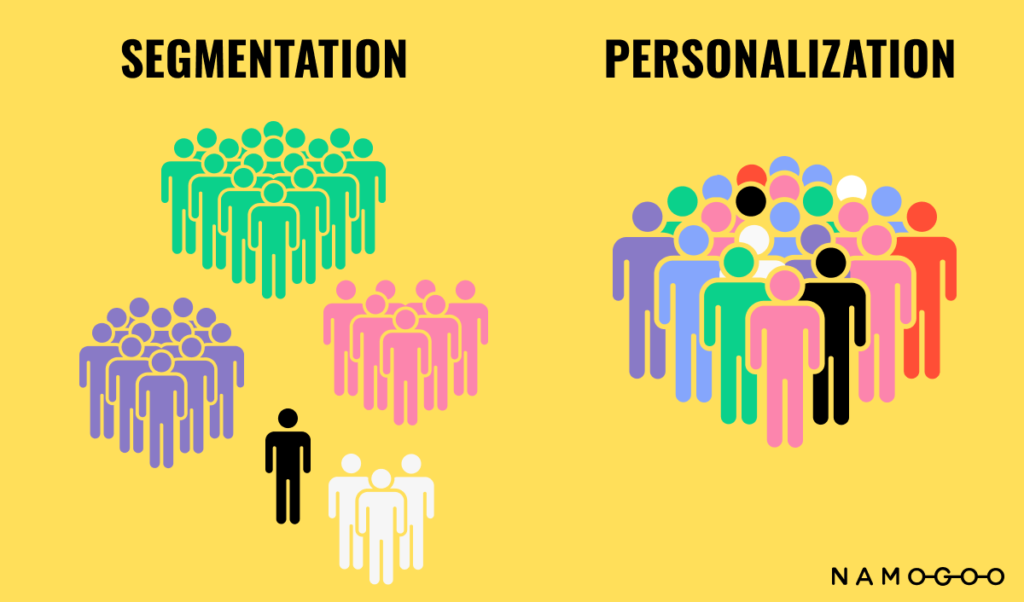
Each visitor has a different purchase propensity in each session, and therefore, treating them the same every time can be redundant and exhausting for the customer, and in the end, encourage abandonment.
The delivery logic should adjust according to the session itself by measuring the intent to prevent abandonment throughout the entire journey. The Intent-Based Promotions machine learning engine reacts in real time to remove any friction and hesitation by showing promotional offers only to those shoppers who need them to convert. Because intent and purchase propensity is dynamic, the same visitor can have a different promotion in each session they have.
3. Gain Control Over Your Promotion Strategy
Many personalization tools lack the ability to allow the business to have control of their campaign’s design or ability to use it cross-platform. Some personalization tools offer managed services where they’ll create the design, launch the campaigns, and manage them on the brand’s behalf. On the one hand, if everything goes well, this can be a no-brainer. However, once a minor change is needed, the dependency on an external team instead of being able to adjust the campaign yourself, can inhibit the overall success. Moreover, when the campaigns are outsourced, the insights provided are generic and have no fundamental analysis that allows for data-driven decision-making.
With Intent-Based Promotions, the promotion studio has dozens of dynamic templates and is platform-agnostic. It allows you to have complete control over the look, feel, and distribution of campaigns, focusing on giving you actionable insights with generated reports. The design studio was built according to industry best practices by our UX and design experts. Other complex personalization tools tend to focus less on the design of promotions and don’t always offer an up-to-date design studio that easily allows brands to customize campaigns within minutes.
4. Effectiveness For All Platforms, Devices & Visitors
In most cases, solutions need time to learn and understand the visitor by relying on past visits and behaviors. It also depends primarily on data gathered from logged-in users, and therefore, needing new visitors to register. These tactics are mainly effective in the web environment.
Intent-Based Promotions isn’t dependent on previous information and needs only 100ms to decide whether to deliver promotions or not, how much to offer and to which customer. There are zero dependencies on logging-in or a known customer base, making it highly effective for both web and mobile apps.
5. Say Goodbye To Complex Deployment & Constant Maintenance
Brands are required to take on the challenge of technology needs and business goals in tandem. When choosing to invest in tech, although it’s not their core business, it takes time and effort and can affect a business’s growth. The deployment and integration process for personalization tools is time-consuming. To ensure performance, constant maintenance is required and can make adoption even more complex. Personalization can negatively impact the end-user’s experience, such as dealing with load times or overwhelming the customer with popups and offers.
Intent-Based Promotions is easy to deploy and requires no maintenance, no designers, no developers, no A/B testing, and no professional services with extra fees. It allows you to fully focus on what’s most important– your revenue and growth.
If Someone Gives You Lemons, Squeeze The Most Out Of Them
It’s important to note that, in many cases, personalization tools do help businesses, as segmentation can save time and allow brands to reach wider audiences more easily.
Intent-Based Promotions actually compliments and work side-by-side with many personalization tools in the market. Again, it just depends on your strategy and business goals. You can easily leverage your current segments and create an in-depth promotions strategy by individualizing the promotional experience for each segment. You can also import your segments via personalization tools into Intent-Based Promotions and create campaigns dedicated for them or exclude them from other campaigns you’re running.
Pick The One That Truly Fits Your Brand Needs & Budget
When you put it all together, it all comes down to your strategy and what matters to your brand.
There’s a lot of buzz in the market when it comes to personalization. Try not to be blinded by the promise of conversion rate uplift as a stand-alone feature. Remember that promotions can drive sales fast but can significantly impact your margins and success in the long term.
To learn more about Intent-Based Promotions, feel free to book a demo with one of our experts.



